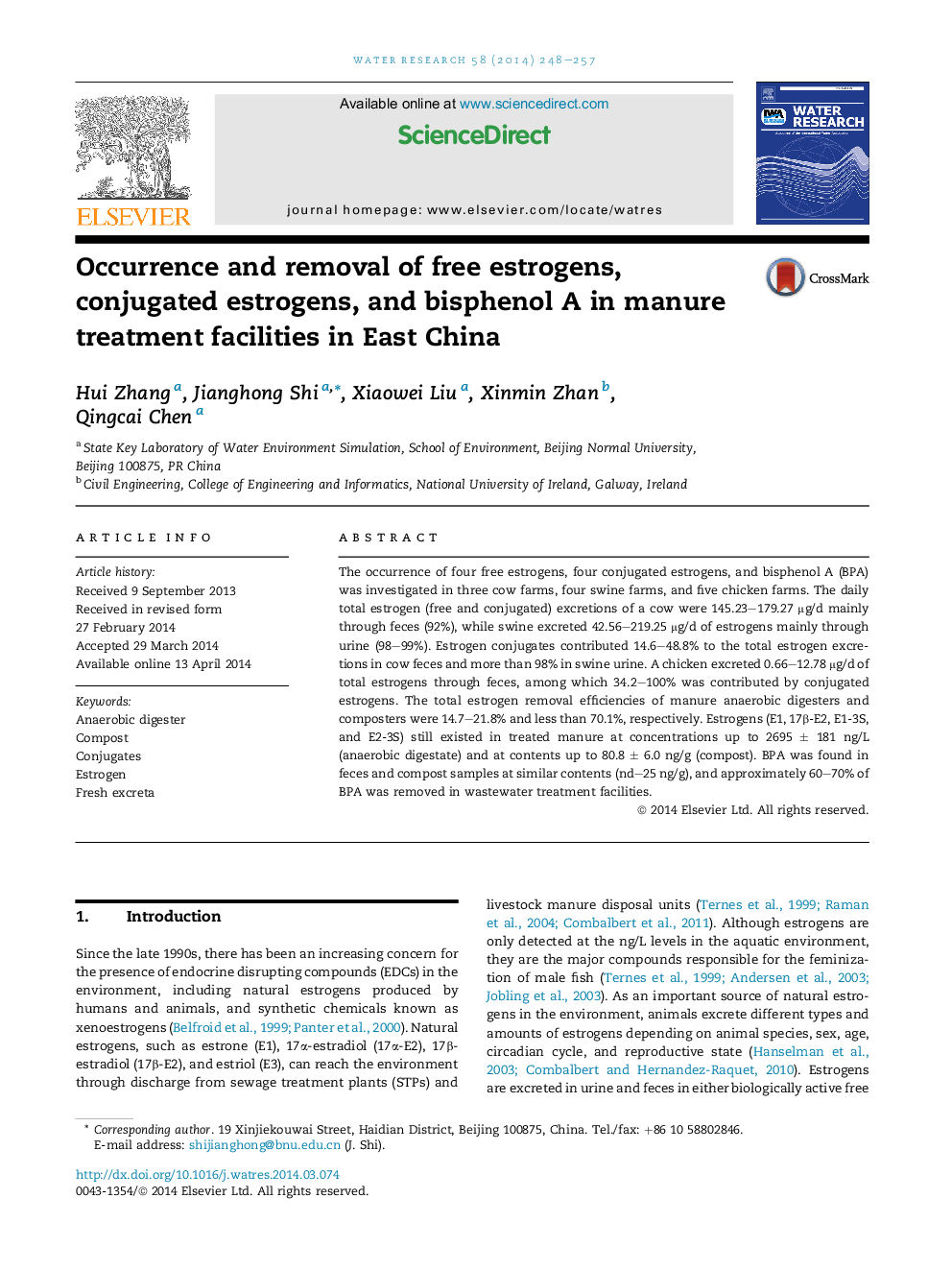| Article ID | Journal | Published Year | Pages | File Type |
|---|---|---|---|---|
| 4481579 | Water Research | 2014 | 10 Pages |
•Estrogens and BPA were investigated in livestock farms in East China.•An efficient clean-up procedure for measuring estrogen conjugates was developed.•Conjugated estrogens in fresh excreta and compost were investigated first time.•Anaerobic digesters showed 14.7–21.8% efficiencies on estrogen removal.•Aerobic conditions and extended composting time increase estrogen removal.
The occurrence of four free estrogens, four conjugated estrogens, and bisphenol A (BPA) was investigated in three cow farms, four swine farms, and five chicken farms. The daily total estrogen (free and conjugated) excretions of a cow were 145.23–179.27 μg/d mainly through feces (92%), while swine excreted 42.56–219.25 μg/d of estrogens mainly through urine (98–99%). Estrogen conjugates contributed 14.6–48.8% to the total estrogen excretions in cow feces and more than 98% in swine urine. A chicken excreted 0.66–12.78 μg/d of total estrogens through feces, among which 34.2–100% was contributed by conjugated estrogens. The total estrogen removal efficiencies of manure anaerobic digesters and composters were 14.7–21.8% and less than 70.1%, respectively. Estrogens (E1, 17β-E2, E1-3S, and E2-3S) still existed in treated manure at concentrations up to 2695 ± 181 ng/L (anaerobic digestate) and at contents up to 80.8 ± 6.0 ng/g (compost). BPA was found in feces and compost samples at similar contents (nd–25 ng/g), and approximately 60–70% of BPA was removed in wastewater treatment facilities.
Graphical abstractFigure optionsDownload full-size imageDownload high-quality image (234 K)Download as PowerPoint slide
